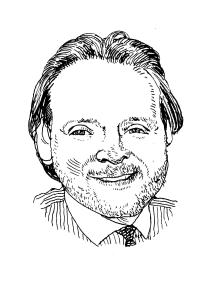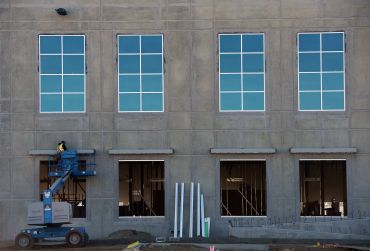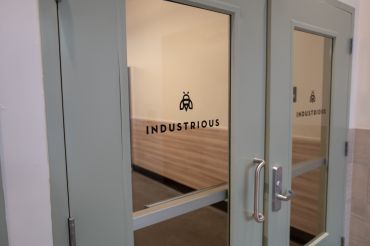
In what was a surprising result, investment property sales activity in New York City during the first quarter of 2010 (1Q10) remained essentially flat from 2009 levels.
There certainly has been a shift in the psychology of the market, and it appears that we may be approaching a bottom, if we have not already landed there. However, the additional “activity” the market has experienced and the uplifted spirits of participants in the marketplace has not yet translated into additional sales transaction activity.
During 1Q10, citywide investment sales activity was $2.03 billion, a 0.7 percent reduction from the $2.05 billion in 1Q09. When we analyze the sales activity during 2009, it becomes clear that 2Q09 was the obvious low point in activity. Therefore, we are expecting 2Q10 activity to significantly outpace activity in 2Q09 as our 2010 sales pace continues to increase.
If we look at sales volume in different marketplaces, we see that northern Manhattan and Manhattan have performed the best thus far in 2010. In northern Manhattan, sales volume was $116.9 million, up 197 percent from the $39.3 million in 1Q09. The 1Q10 figure is also up 51 percent from the $77.6 million in 4Q09. The Manhattan market remained relatively unchanged, with $1.539 billion of volume in 1Q10 versus $1.536 billion in 1Q09. This represents only a 0.2 percent increase in activity. However, in Manhattan, 1Q10 sales volume increased by 51 percent from the $1.01 billion in 4Q09.
When we look at the boroughs, we see a different story. In the Bronx, there were $69.8 million in sales volume in 1Q10, down 13 percent from the $79.7 million in 1Q09 and down 7 percent from the $74.7 million in 4Q09. In Queens, volume dropped to $143.4 million in 1Q10 versus $181.3 million in 1Q09, a 20.9 percent drop. Additionally, 1Q10 volume dropped 32 percent from the $210.7 million of sales in 4Q09.
The borough which performed the weakest was Brooklyn, where we saw only $161.9 million in sales in 1Q10; this represented a reduction of 23 percent from the $209.2 in sales in 1Q09 and a 41 percent reduction from the $273.9 million in 4Q09.
For the city as a whole, the $2.031 billion of sales represented a 0.7 percent reduction from the $2.046 billion in 1Q09. However, if annualized, first quarter activity will represent nearly a 30 percent increase over 2009 levels.
ANALYZING ONLY THE dollar volume of sales, as we have just done, can be somewhat misleading, as large transactions can distort these figures significantly. For instance, in 1Q10, there were 373 properties sold; however, the top six sales represented nearly half (48 percent) of the total dollar volume of sales. This is why, at Massey Knakal, we focus more on the number of properties sold than on the dollar volume of sales. It is more indicative of activity in the marketplace.
As we discussed, there were 373 properties sold citywide in 1Q10. This figure represented a 2.8 percent increase from the 363 sales in 1Q09, and a decrease of 6.3 percent from the 398 sales in 4Q09.
If we annualize the 373 properties sold, the market is on pace for 1,492 sales in 2010, which represents a turnover rate of 0.9 percent of the total stock of buildings that we track. This statistical sample consists of approximately 165,000 properties. The 0.90 percent turnover is a modest increase over the 0.87 percent turnover the market experienced in 2009. To provide a frame of reference, in 2006 and 2007, turnover in New York City was 2.96 and 3.04 percent, respectively.
Once again, Manhattan and northern Manhattan led the way in terms of volume of buildings sold (the Manhattan market normally leads us out of recessionary periods). In the Manhattan market, there were 99 sales in 1Q10, an increase of 98 percent from the 50 sales in 1Q09. In northern Manhattan, there were 35 properties sold, a 94.4 percent increase from the 18 sales in 1Q09.
Similar to the reductions we saw in dollar volume of sales in the boroughs, the number of buildings sold was also down outside of Manhattan. In Queens, there were 91 sales, representing a 13.3 percent reduction from the 105 sales in 1Q09. In the Bronx, there were 41 properties sold, representing a 14.6 percent decrease from the 48 sales in 1Q09. In Brooklyn, there were 107 sales, representing a 24.6 percent reduction (the largest reduction in all submarkets) from the 142 sales in 1Q09.
We are expecting significant increases in sales volume as 2010 progresses. On a citywide basis, we expect volume, in terms of number of properties sold, to hit 1.2 percent of the total stock of buildings, which would represent approximately a 40 percent increase in activity over last year.
In the Manhattan market, we expect this volume to rise into the 1.6-to-1.7 range, representing an increase of activity of approximately 40 to 45 percent. While these volume increases seem large on a percentage basis, we must remember that we are coming off extraordinary lows, so we believe these increases are very achievable.
On a market-wide basis, if we achieve the 1.2 percent turnover that we are expecting, this would represent just slightly fewer than 2,000 properties sold for the year. For reference, in 2007, there were 5,018 properties sold.
WITHIN NEW YORK CITY’S investment-sales market, we have seen some clear and notable trends emerging. Some have been positive, and some have been negative, leading to significantly different perspectives among participants in the marketplace.
On the positive side, we have clearly seen more optimistic attitudes from market participants. Whether it is because our new reality is feeling more and more like a comfortable old shoe or because people believe that things are tangibly getting better, there is a brighter outlook among many people in the industry.
Another positive trend is that activity is increasing, as tangibly represented by contract executions. For example, in 1Q10, Massey Knakal’s contract-signing activity has increased 11 percent over 4Q09 and 87 percent over 1Q09. We believe this activity is representative of macro trends in the entire marketplace.
From what we hear, our clients, on both the residential and commercial fronts, are seeing rents plateau. This would intuitively make sense, given that unemployment appears to have bottomed out and job creation is starting to rise. As you know, I believe one of the most important metrics determining the health of real estate fundamentals is unemployment, and it appears that the trend in job losses has reversed.
AS YOU HAVE NOTICED, we have not addressed pricing trends in this analysis; it is very difficult to draw conclusions on pricing based on quarterly information. We compare pricing trends on a half-year basis, which is more statistically significant as the sample size becomes larger. I will, however, touch on it here.
As we look at pricing in 1Q10, we see that in some markets, and in some product-type sectors, values are up; in others, they are down. This signifies to us that the market is reaching a bottom and valuation declines could be stabilizing.


